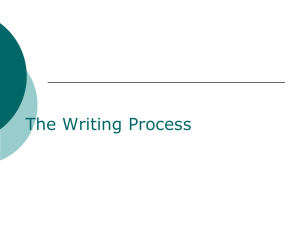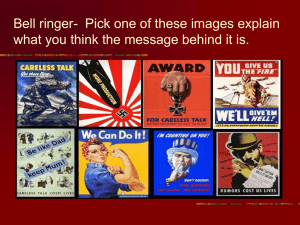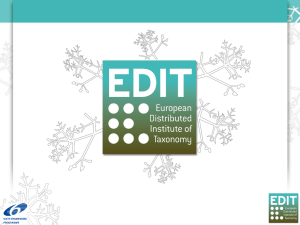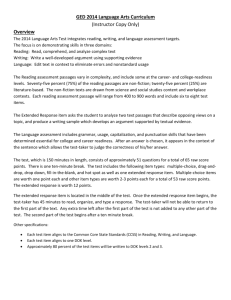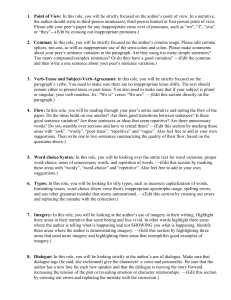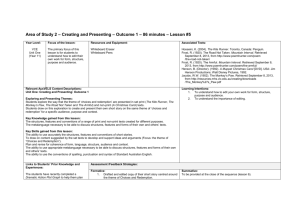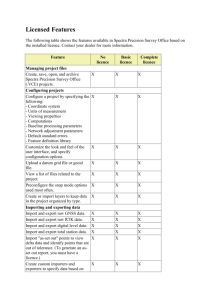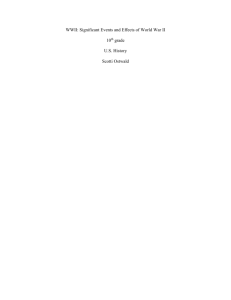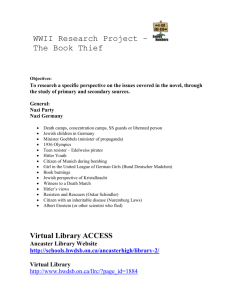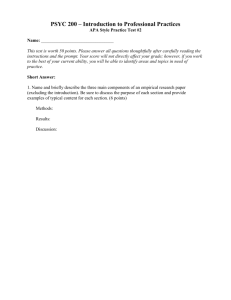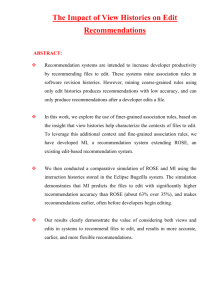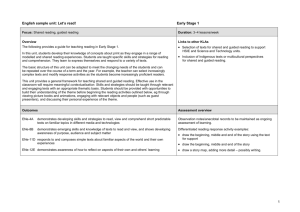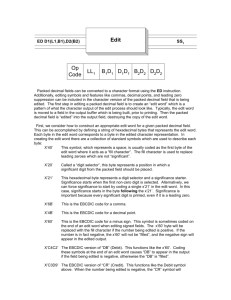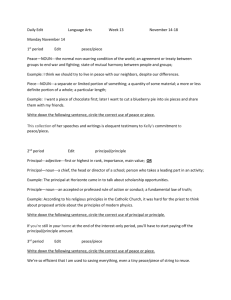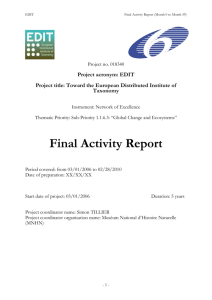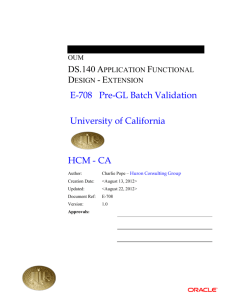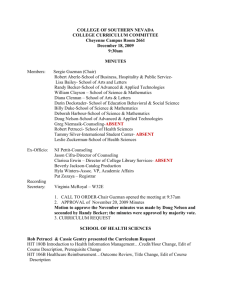Blended Learning Lesson
advertisement
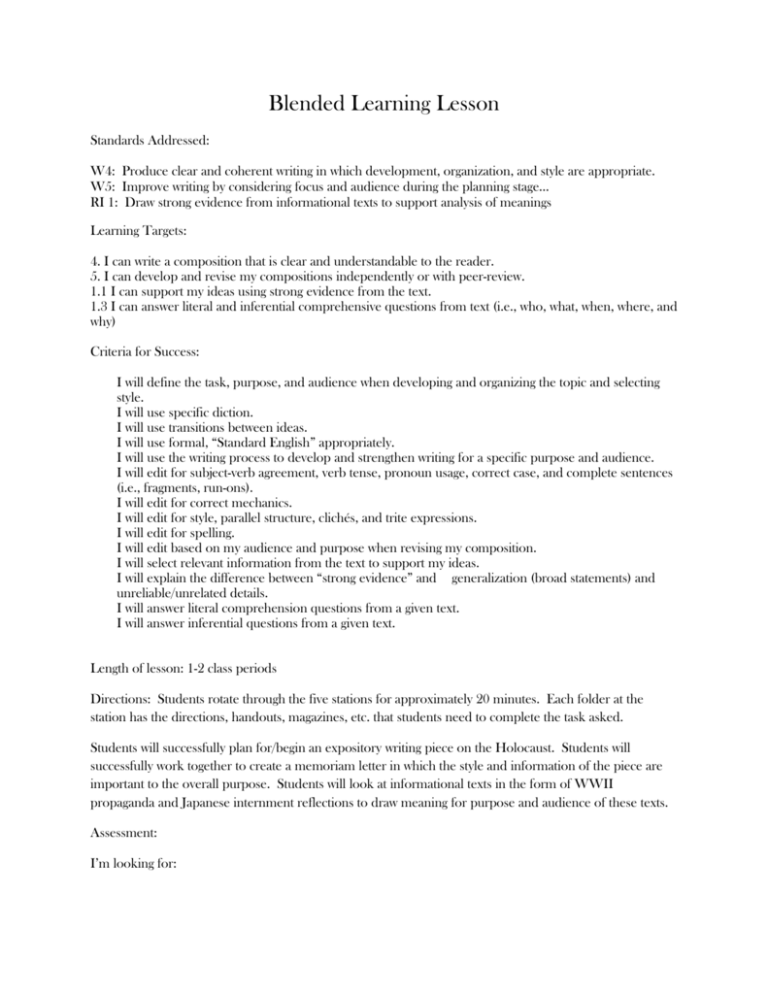
Blended Learning Lesson Standards Addressed: W4: Produce clear and coherent writing in which development, organization, and style are appropriate. W5: Improve writing by considering focus and audience during the planning stage… RI 1: Draw strong evidence from informational texts to support analysis of meanings Learning Targets: 4. I can write a composition that is clear and understandable to the reader. 5. I can develop and revise my compositions independently or with peer-review. 1.1 I can support my ideas using strong evidence from the text. 1.3 I can answer literal and inferential comprehensive questions from text (i.e., who, what, when, where, and why) Criteria for Success: I will define the task, purpose, and audience when developing and organizing the topic and selecting style. I will use specific diction. I will use transitions between ideas. I will use formal, “Standard English” appropriately. I will use the writing process to develop and strengthen writing for a specific purpose and audience. I will edit for subject-verb agreement, verb tense, pronoun usage, correct case, and complete sentences (i.e., fragments, run-ons). I will edit for correct mechanics. I will edit for style, parallel structure, clichés, and trite expressions. I will edit for spelling. I will edit based on my audience and purpose when revising my composition. I will select relevant information from the text to support my ideas. I will explain the difference between “strong evidence” and generalization (broad statements) and unreliable/unrelated details. I will answer literal comprehension questions from a given text. I will answer inferential questions from a given text. Length of lesson: 1-2 class periods Directions: Students rotate through the five stations for approximately 20 minutes. Each folder at the station has the directions, handouts, magazines, etc. that students need to complete the task asked. Students will successfully plan for/begin an expository writing piece on the Holocaust. Students will successfully work together to create a memoriam letter in which the style and information of the piece are important to the overall purpose. Students will look at informational texts in the form of WWII propaganda and Japanese internment reflections to draw meaning for purpose and audience of these texts. Assessment: I’m looking for: an organized letter that shows commemoration of a Holocaust survivor with a focus on powerful diction and style. an effective thesis statement that is aligned with the expository prompt a collage that conveys a strong mood a focused reflection on Japanese internment and the similarities between those and concentration camps identified purpose and target audience for WWII pieces of propaganda by using the propaganda chart and questions. Differentiation: The anchor questions for students are differentiated by level.



